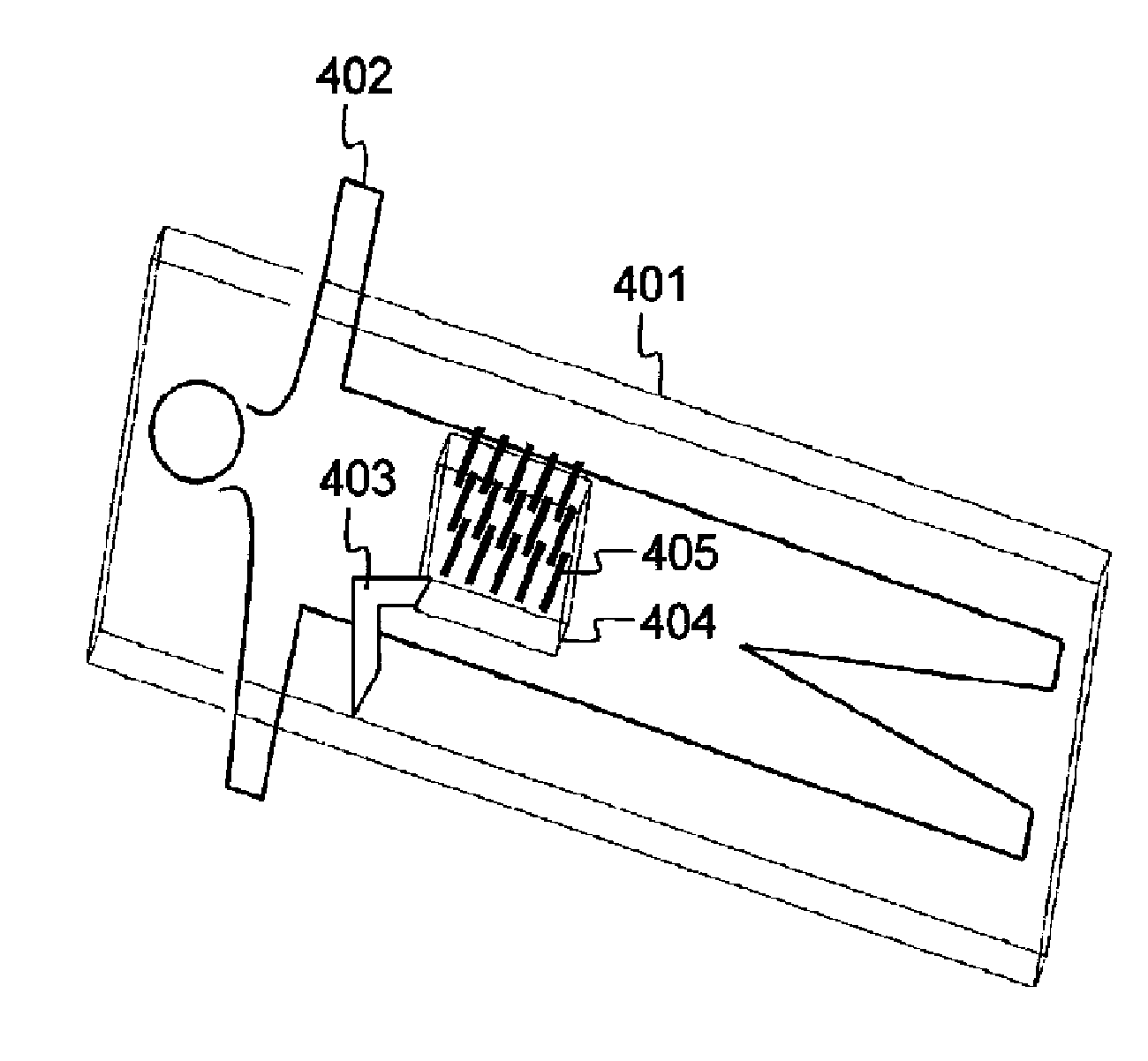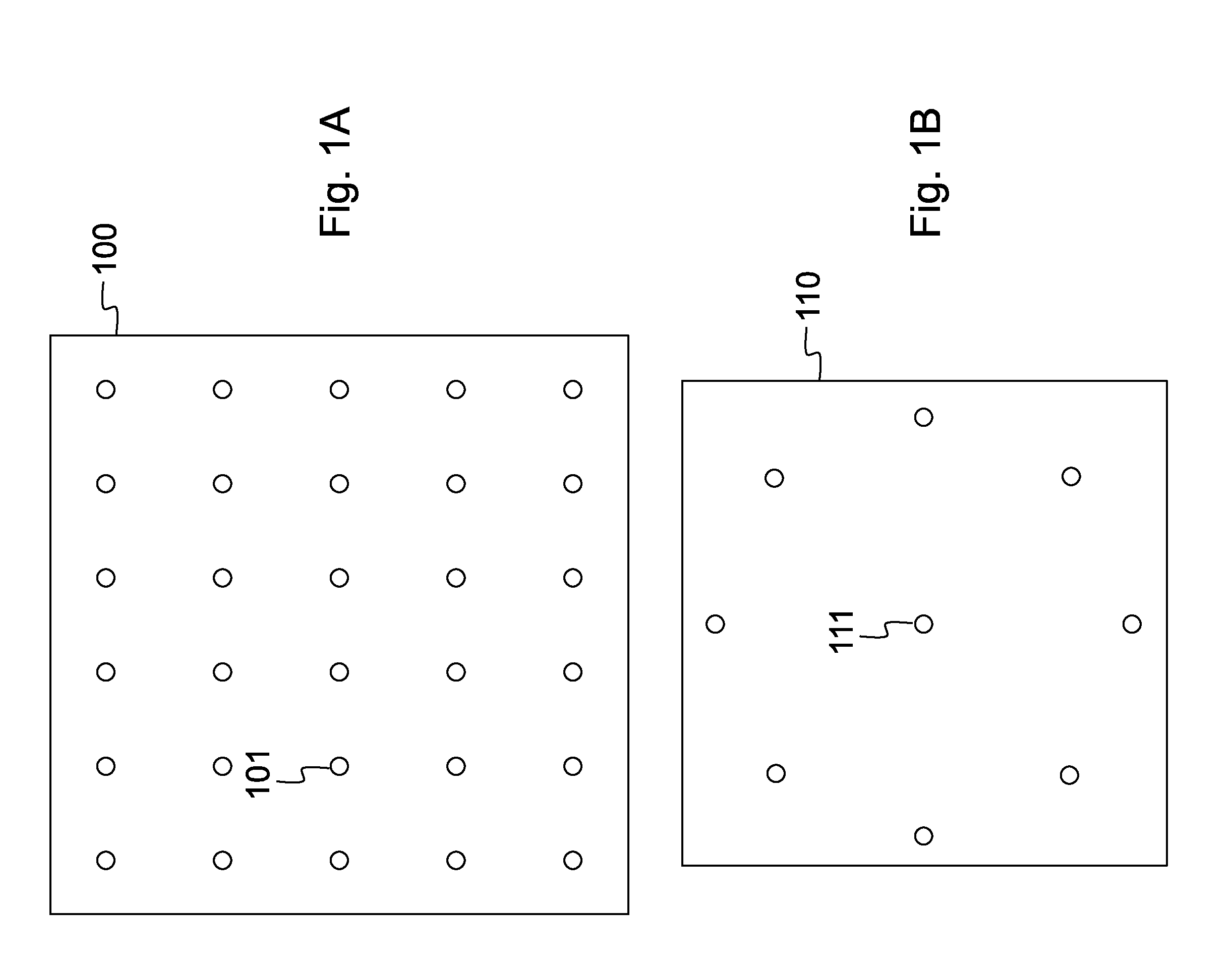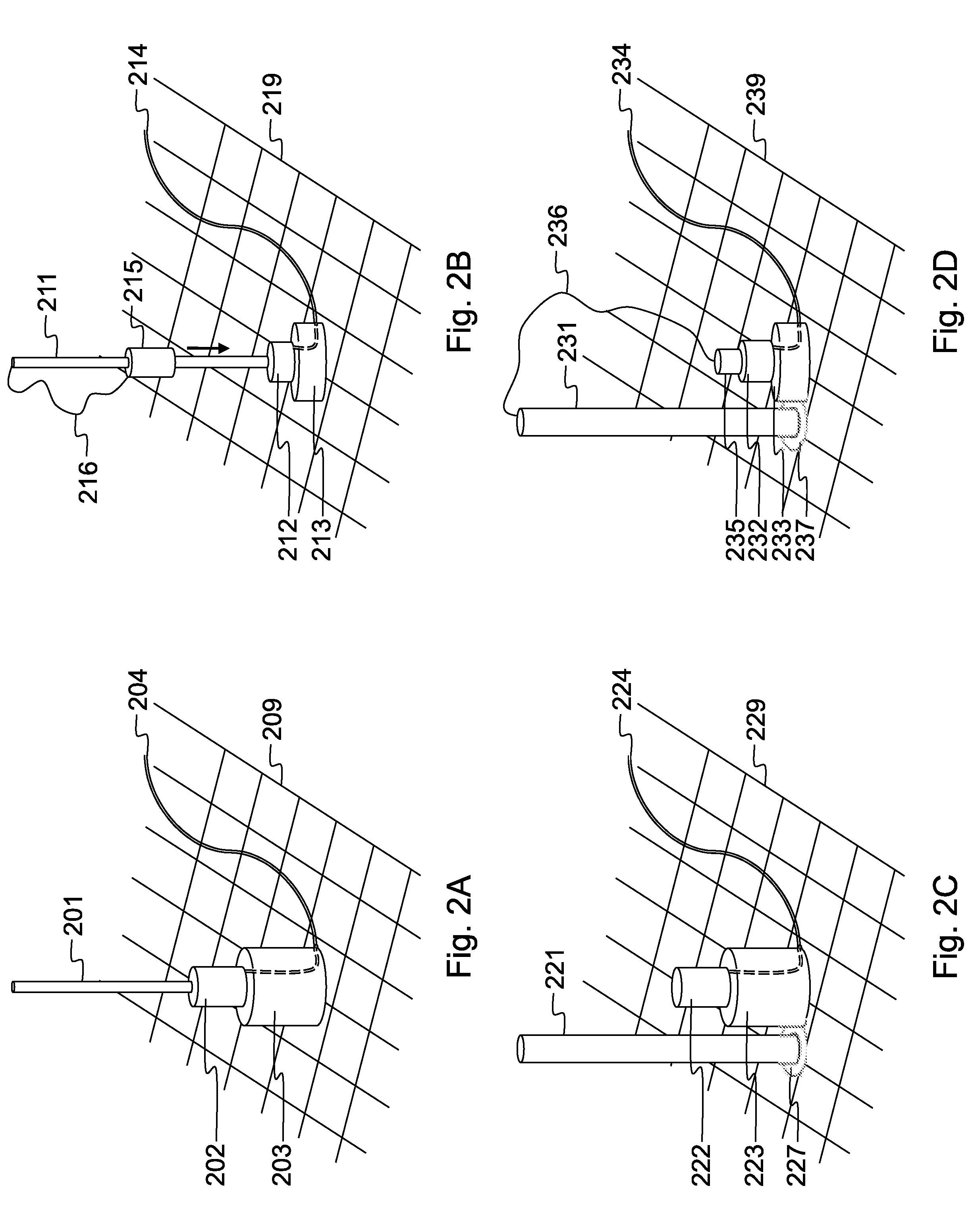Device and method for radio frequency ablation (RFA)
a radio frequency ablation and device technology, applied in the field of radio frequency ablation or rfa, can solve the problems of single shaft electrode, insufficient capacity of limited ablation diameter, and easy termination of rf emission, and achieve the effect of foil-proof electrode connectivity
- Summary
- Abstract
- Description
- Claims
- Application Information
AI Technical Summary
Benefits of technology
Problems solved by technology
Method used
Image
Examples
Embodiment Construction
)
[0167]A preferred embodiment for tailored radio frequency ablation (RFA) according to the invention consists of the integrated combination of:[0168]a mesh or plate with a pattern of electrode guides, electric connectors and an integrated electric circuit;[0169]plural adjustable electrodes;[0170]an adjustable guiding device;[0171]a ground plate;[0172]a switch box:[0173]a personal computer (PC) with:[0174]operation algorithms;[0175]logging of the procedure;[0176]visualisation of the position of the electrodes, their impedance, active length, and activation status (positive or negative);[0177]introduction of data, menu;[0178]an electric generator that allows power up to 500 W and that can work with low impedance.
[0179]FIG. 1A and FIG. 1B illustrate implementations of the mesh or plate with a pattern of electrode guides, electric connectors and an integrated electric circuit. Thanks to the mesh or plate multiple electrodes can be arranged in fixed clusters, e.g. triangle, square, row, ...
PUM
 Login to View More
Login to View More Abstract
Description
Claims
Application Information
 Login to View More
Login to View More - R&D
- Intellectual Property
- Life Sciences
- Materials
- Tech Scout
- Unparalleled Data Quality
- Higher Quality Content
- 60% Fewer Hallucinations
Browse by: Latest US Patents, China's latest patents, Technical Efficacy Thesaurus, Application Domain, Technology Topic, Popular Technical Reports.
© 2025 PatSnap. All rights reserved.Legal|Privacy policy|Modern Slavery Act Transparency Statement|Sitemap|About US| Contact US: help@patsnap.com



